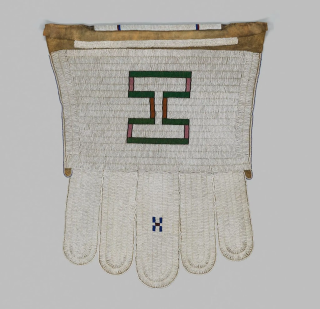
Girl's Apron (Lighabi)
, mid to late 20th century
South Africa
Glass beads, hide, 27.9 x 30.5 cm
the Ndebele people used beadwork to mark the cultural stages of a woman’s life. Beads were incorporated into these garments in the 19th century, where previously they had used other natural materials such as furs, feathers, shells, and seeds, they introduced glass and metals. For the Ndebele people, the inclusion of glass beads served to adorn women’s dress.
One example of beads on women’s clothing is the lighabi, or girl’s apron that young girls would have worn. The dangling threads at the bottom consisted of a variety of beads and when worn would move around the child, this created dimension and emphasized the youth of the child who wore the garments






